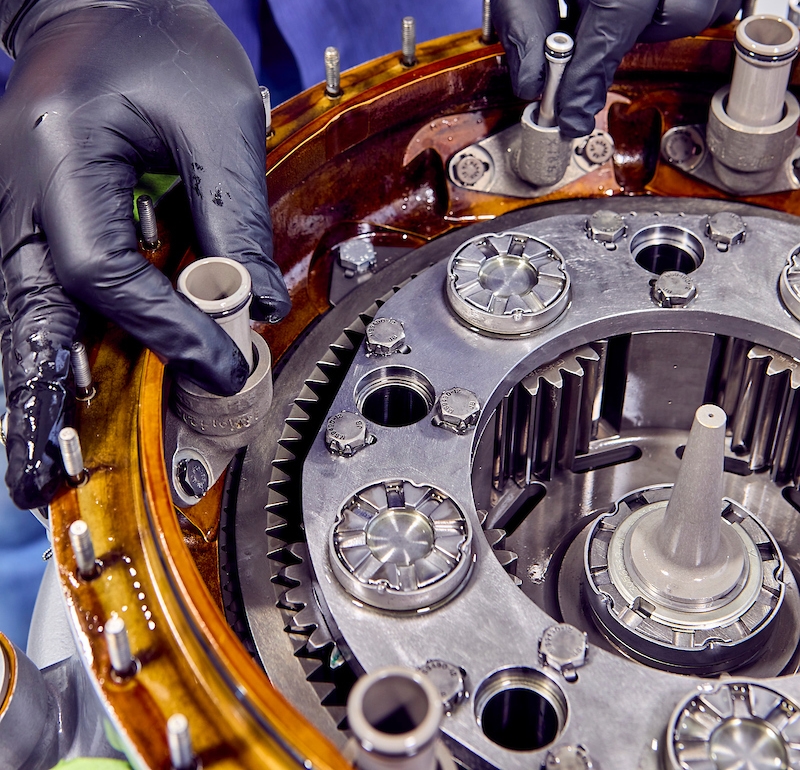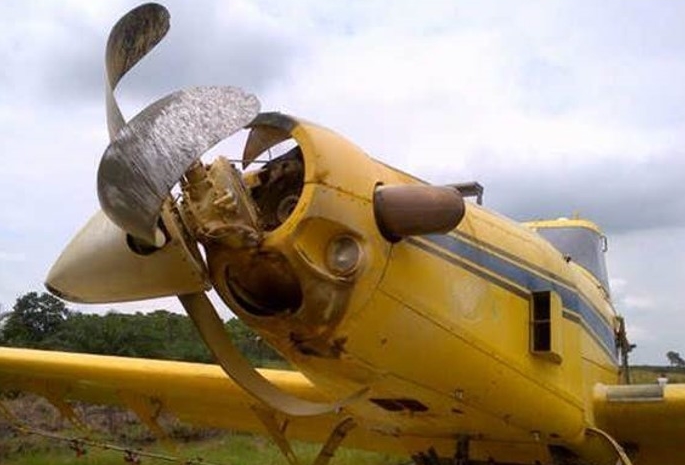I have written before about unscheduled events (exceedances). This time under the title of unscheduled events, I will look at prop strikes and sudden stoppage. These two events are interconnected in the engine maintenance manuals, although there are some differences once we get into the overhaul manual. Here are a few things from the engine maintenance manual to keep in mind. If your engine must be removed because of an unscheduled event or circumstance, you may be asked to provide additional information in the form of a completed SIL GEN-135. This Pratt & Whitney Canada service information letter (SIL) is used to provide data about the event. Photos of the event may also be requested. If you have a prop strike or sudden stoppage, take pictures of the airplane overall, the propeller and the engine before removal. The more data provided, the better. You want to leave as few questions as possible.
What defines prop strike or sudden stoppage? A prop strike is a rotating prop hitting an object that causes a speed variation (NO stoppage) and blade damage, OR a stationary prop is hit by a moving object that causes blade damage. On the other hand, a sudden stoppage is when a rotating prop contacts something that causes the prop to stop. Seems simple enough, right?
After defining these events, let’s now separate the two from one another. We can focus on the prop strike first. Our maintenance journey begins right after you suffer a prop strike. The maintenance manual asks, what was the Ng during the event? We need to distinguish between minor and major types of damage. Did the incident happen below the Flight Idle Ng or while the engine was shut down? Is the blade damage minor per the propeller maintenance manual? If you verify the answer to these questions is “yes,” you may not have to pull the engine yet. If your event fits this profile, you might have to run the engine and check the oil filter and chip detector, followed by a monitoring/inspection sequence until you can return the engine to full service. However, if metal is found during the monitoring phase or a vibration begins, you will have to remove the power section for inspection. Therefore, even if your event is minor, you must document and advise your insurance company.
What if you were above flight idle or significant damage was done to the prop blades? Prop strike on a power line? Remove the power section and send it in for repair. Before pulling the power section, you will want to inspect the entire engine closely – looking for cracks, twists or distortions. Pull the starter/generator and look at all the accessory pads on the accessory gearbox. Check the FCU and pump to ensure they didn’t receive any damage. These accessories can sustain damage in the event of a hard prop strike. If a wire was hit that wasn’t a guide, support or telephone wire, you will want to look for evidence of electrical discharge, including burn marks at the C-flange and the compressor turbine disk. The C-flange is the “split” point for the gas generator and the power section.
Sudden stoppage of the propeller is a little like the previous inspection. Remove the power section and send it in for repair. Inspect the balance of the engine for damage. One thing added in the maintenance manual is to rotate the compressor. You want to listen for audible scraping, rubbing or interference. We found the compressor to be rubbed on some severe sudden stoppage events. When the engine is assembled, the tolerances of the compressor and other components are very tight. Think of the force that the engine was subjected to. That force can shift parts spinning quickly, causing rub and damage.

When the power section has been received in the shop, the work really begins. We shift our focus from the maintenance manual to the overhaul manual. There are procedures in the overhaul manual that tells every engine shop what to disassemble and inspect. There have been some changes to these procedures over the years. One of those changes includes replacing the prop shaft if a sudden stoppage occurs. The most recent change is to perform a heat treatment for the exhaust duct. Most of the internal components in the power section require an overhaul level inspection. This even includes the power turbine disk(s) and blades. There are some automatic replacement items like the before-mentioned prop shaft and the #6 and, if applicable, the #7 bearing. Not going to lie; these changes have led to longer shop turn times on prop strikes and sudden stoppage power sections. Your shop has to do an overhaul level inspection on these components, which takes time.
There is one other item that must be mentioned. The first section of the overhaul manual sudden stoppage/propeller strike area lists several scenarios where the overhaul manual work scope doesn’t apply. This doesn’t just apply to engines under warranty. This is for all engines. Some of these scenarios are: if the event took place on takeoff or landing or if drive train components are sheared. The manual also noted that if the operator fails to give sufficient information about the event, the engine repair must be done as a “worst case.” So, what does your shop do if the work scope in the overhaul manual does not apply to your incident? The process now involves a request sent to Pratt & Whitney Canada engineering. They review all the information provided and decide what the engine requires for a return to service. We reference this as a request for evaluation or RFE.

I sincerely hope no one hits anything with their airplane or prop. If it happens to you, contact your insurance company—document as many details about the incident, including pictures. Determine with your mechanic and engine shop what level of inspection is required based on the information in the engine maintenance manual. If your engine must go in for repair, realize the engine shop is working as hard as possible to get you back in the air as quickly as possible.
Robert Craymer has worked on PT6A engine and PT6A powered aircraft for the past three decades, including the last 25+ years at Covington Aircraft. As a licensed A&P mechanic, Robert has held every job in an engine overhaul shop as well as being an instructor of PT6A Maintenance and Familiarization courses for both pilots and mechanics. Robert can be reached at robertc@covingtonaircraft.com or 662-910-9899. Visit us at covingtonaircraft.com.





